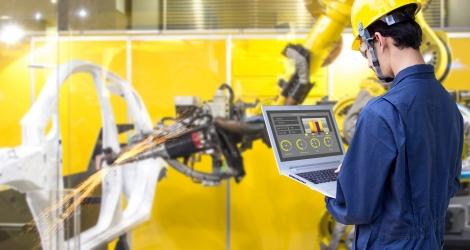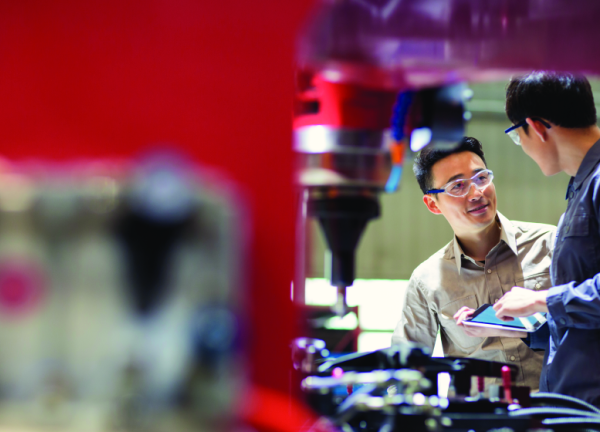Cobot: my colleague is a robot
By 2030, people and robots will be working collaboratively, with neither replacing the other... Far from science fiction, cobotics is gradually becoming part of our daily lives as it makes us more productive, releases us from lower value-added tasks and helps us optimize the work we do. But what actually are cobots?

“Bringing in a cobot to take care of sampling has left our teams free to focus on their core skills and/or on higher value-added tasks.”
Of all the robot family, give me the cobot. It’s short for ‘collaborative robot’; not to be confused with its distant cousin, the autonomous robot.
Really, the word ‘cobot’ doesn't mean anything to you? But the trend towards cobots has been growing over the last decade and has crept into our private and business lives under the radar. You can think of your car GPS as a small-scale cobot that has taken the place of roadmaps, for example. In the same way, the smartphone apps you use to be more productive or plan your work are a simple forms of cobot.
As genuine personal assistants, cobots are therefore primarily work and support tools designed to optimize quality, boost productivity and/or improve safety. Including in factories.
A new kind of colleague

These collaborative robots are now invading the worlds of manufacturing, the oil industry and applied sciences. And within the next half decade, they’ll even be working alongside the majority of company employees. A colleague that’s a cobot? Highly likely, and it's coming soon. According to the newly published World Robotics 2020 - Industrial Robots report, there are currently 2.7 million industrial robots at work today in factories worldwide. Among this total, cobot installations increased by 11%. The market may still be in its infancy, but it is nevertheless attracting a great deal of interest from industry, which sees these new types of ‘colleagues’ as improving safety. This is the case in the nuclear industry, for example, where cobots handle highly toxic substances instead of human operators.
Instead of humans? Yes, but only for repetitive, time-consuming and low value-added tasks

So cobots are there to lend a hand to teams and help them with their most arduous tasks. Handling heavy loads, carrying out repetitive movements, taking samples... The Slimwool project in Saint-Gobain production plants uses this human/robot collaboration. Commissioned in February this year at the Lucens plant in Switzerland, this model employee takes samples of glass wool at regular intervals to measure their performance. “Our cobot rationalizes the work of the operators, and allows us to take more measurements and samples, especially at night,” explains project leader François Decrocq.
Thanks to this new team member, everyone is now free to refocus on their core skills and/or on higher value-added tasks. But to reach this stage, the cobot had to be ‘taught’ to handle the sample on the basis of weight and density to avoid damaging it. As a good student, the cobot has also ‘learned’ to move within a defined perimeter.
Humans and machines sharing work?
Discreet and competent, small cobots therefore boost production plant productivity and relieve teams of low-reward tasks. Depending on the physical demands of the tasks involved, cobots can also help to reduce occupational accidents and even prevent the development of musculoskeletal disorders. That’s the role of the exoskeletons we hear so much about, which literally extend the operator's body, amplify physical effort or optimize precise movements.
In this sense, the cobot marks a truly pivotal point in technology by enabling humans and machines to share the work.
It also gives us the opportunity to reconsider the role of humans within the organization. Not only their place, but also the work they do and how interesting that work is. Do operators keep control of their key skills? Do cobots bring meaning back into work? Can they release you to focus on more rewarding tasks?
There’s no shortage of questions, and managers must weigh up the pros and cons when encouraging their teams to embrace this technology. The best way is to involve them in this management of change, working with them to identify the point at which cobots become appropriate.
One thing is certain: they may relieve humans of arduous tasks, help us, remove risks and never get tired... But cobots cannot replace us.
Credits:
© Blue Planet Studio/Shutterstock
© Party people studio/Shutterstock
© PaO_STUDIO /Shutterstock
The latest stories
All stories
View more


